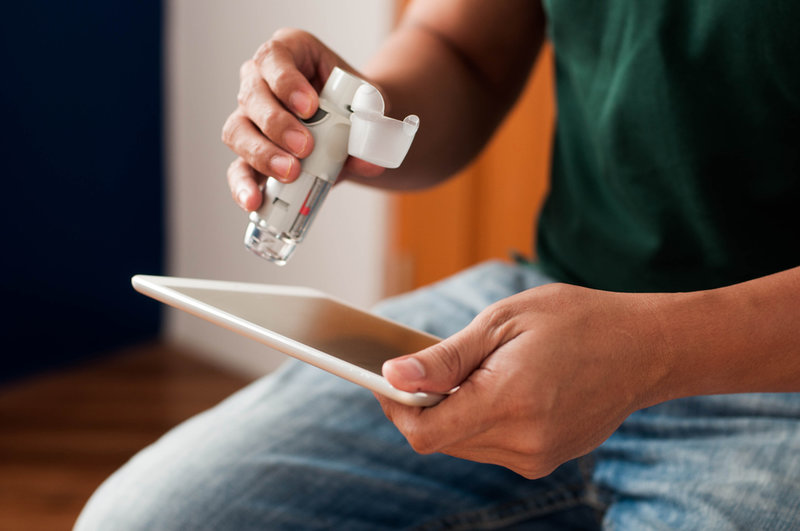Feature
Breathing easy: How digital inhalers are changing asthma treatment
As data on digital inhaler systems gain traction, Natasha Spencer-Jolliffe explores how these devices enhance the patient experience.

Credit: Getty Images/Karl Tapales
AstraZeneca, Teva Pharmaceuticals, and Novartis, and other companies, are expanding their reach in the asthma space by capitalizing on digital technologies to enhance the patient experience. But experts say the complete integration of these devices and platforms into the healthcare system remains to be seen.
Dr. Amy Chan, senior clinical research fellow at the School of Pharmacy, University of Auckland, says digital inhalers have existed for almost 30 years. The only difference between now and then is “they were much clunkier, larger, and with more limited functionality.” But in recent years, the scope for these devices has expanded into digital inhaler platforms, presenting a way to potentially change how people with asthma and chronic obstructive pulmonary disease (COPD) manage their conditions.
Companies like AstraZeneca and Novartis have entered the digital inhaler system market by collaborating with the Madison, Wisconsin-based digital health company Propeller Health to connect patients using the devices with an accompanying platform. Electronic respiratory health company Adherium has also developed a digital inhaler system focusing on patient adherence, remote monitoring, and data management.
“The use of digital inhalers has certainly grown,” says Chan. There are a greater variety of digital inhaler systems available today, and increased uptake by patients and healthcare professionals. “There is also increasing data from large-scale randomised clinical trials demonstrating their impact on improving asthma outcomes,” says Dr. Giselle Mosnaim, clinical associate professor at the University of Chicago Pritzker School of Medicine. In February, Teva published real-world data on its Digihailer system, a digital health offering consisting of a dry powder smart inhaler and connected app and dashboard. First approved in 2018, the system has since been used across different settings for asthmatic patients.
“However, their use in routine healthcare is still limited,” adds Chan.
Enhancing the patient experience
Today, digital inhalers are no longer limited to medication delivery. They provide functionalities to support the whole process, including reminders for when doses are due, delivering medication, and providing feedback on whether medication has been taken correctly.
“Digital inhalers empower patients to be more proactive in taking control of their asthma,” says Mosnaim. Patients can track the overuse of quick-relief or rescue medications using digital inhalers, which may indicate an impending asthma exacerbation, and share that information with physicians. They can track controller medications, which control symptoms and prevent exacerbations over time. Some devices also enable patients to track their inhalation quality and adjust their inhaler technique.

Credit: Getty Images/Geber86
“When studies use digital inhalers and ask participants about their experience using this technology, patients consistently report a good or positive experience,” says Mosnaim. In a 2022 Cochrane review, researchers concluded patients who used digital interventions such as mobile phones and smart inhalers had better medication adherence and asthma control, and improved quality of life. In a 2020 study, Chan found devices that can easily calculate adherence to activation and inhalation could have the greatest utility in clinical practice. However, researchers investigating electronic monitoring devices also found failure rates of 13–16%, indicating the importance of quality control.
Complementary platforms to create digital systems
Real-world usage patterns of Teva’s Digihailer digital health platform showed that digital inhaler platforms could provide “clinically meaningful information on inhaler usage quality,” as per data presented at the American Academy of Allergy, Asthma and Immunology (AAAAI) 2023 Annual Meeting (abstract no. 037)
Platforms enable researchers and practitioners to see what and when inhalers have been used and whether they have been used correctly. “Any platform that allows us to see patterns of inhaler use has a huge potential to inform treatment decision-making by health professionals and patients,” Chan says.
Many patients do not use their inhalers correctly and are unaware they are not using the correct technique.
Dr. Giselle Mosnaim, clinical associate professor at the University of Chicago Pritzker School of Medicine
Poor inhaler use can stem from either missing doses, poor inhaler technique, or a combination of both. “Many patients do not use their inhalers correctly and are unaware they are not using the correct technique,” confirms Mosnaim. By providing feedback on inhalation quality, patients can get immediate information on inhaler technique and make adjustments until they see the desired outcome. Clinicians can determine whether the patient needs further education, a change in dose, or medication to optimise their asthma control.
The devices’ digital capabilities enable patients to incorporate these solutions into their everyday lives. “Patients benefit from having better medication taking and, therefore, better health outcomes,” says Chan.
Lack of investment stalls progress
However, funding is a significant challenge to growth in the digital inhaler space, Chan shares. While research has shown that digital inhalers can benefit patients, Chan says getting funding for research and patient use has yet to follow. “The fact that it is a technological device, however, has limited governments in taking the step to fund these and make them available and accessible for everyone,” Chan adds.
Today’s digital inhaler space requires “consistent engagement over an extended timeframe,” says Francis White, global vice president of business development at Adherium, along with “showing commitment while continuing to prove the patient benefits, cost reductions, and reduction of staff burden.”
A lack of awareness, difficulty in changing established patient pathways, overstretched healthcare workers with little time to reflect on improvements, and general inertia and fear of change present in healthcare systems are also leading challenges impacting the digital inhaler space, White shares.
“To overcome their growth limitations, digital inhaler companies should band together and advocate for governments to fund these devices, particularly for people with poor asthma control due to poor adherence,” Chan asserts.
Change asthma care for the better
Despite obstacles, progress is happening. “Patients and clinicians are finding ways to access better and incorporate digital inhalers for the treatment of patients with asthma because they are seeing improvement in patient outcomes,” Mosnaim says.
“We will look back to today and wonder how patients manage their disease, put up with taking time off work for scheduled clinic visits, and the toxic effect of preventable exacerbations,” says White.
Digital inhaler platforms have the potential to allow remote care delivery and informed treatment decision-making. Devices can also improve patient-provider communication and patient self-management by providing more detailed insights into their medication-taking and how it relates to their asthma control.
“There is also huge potential to use these data to inform future drug development and clinical trials of new asthma medication,” adds Chan. “The patient of the future will be fully empowered, with data-driven solutions, to have well-controlled respiratory conditions that fade into the background rather than take over their lives,” says White.